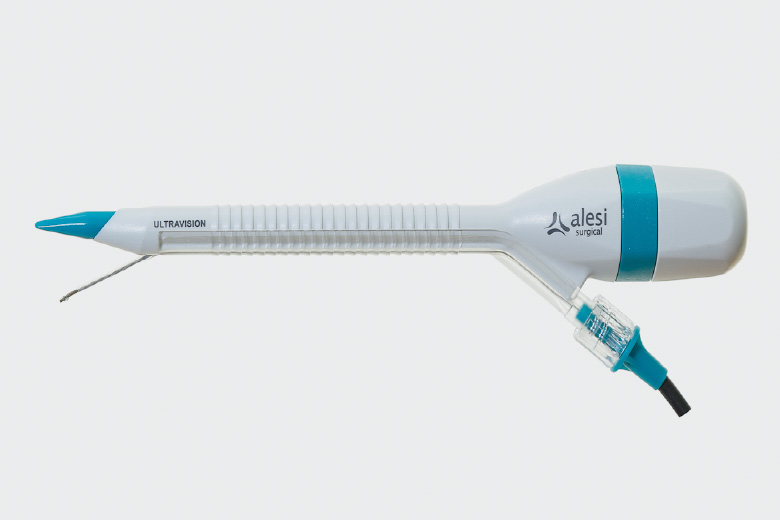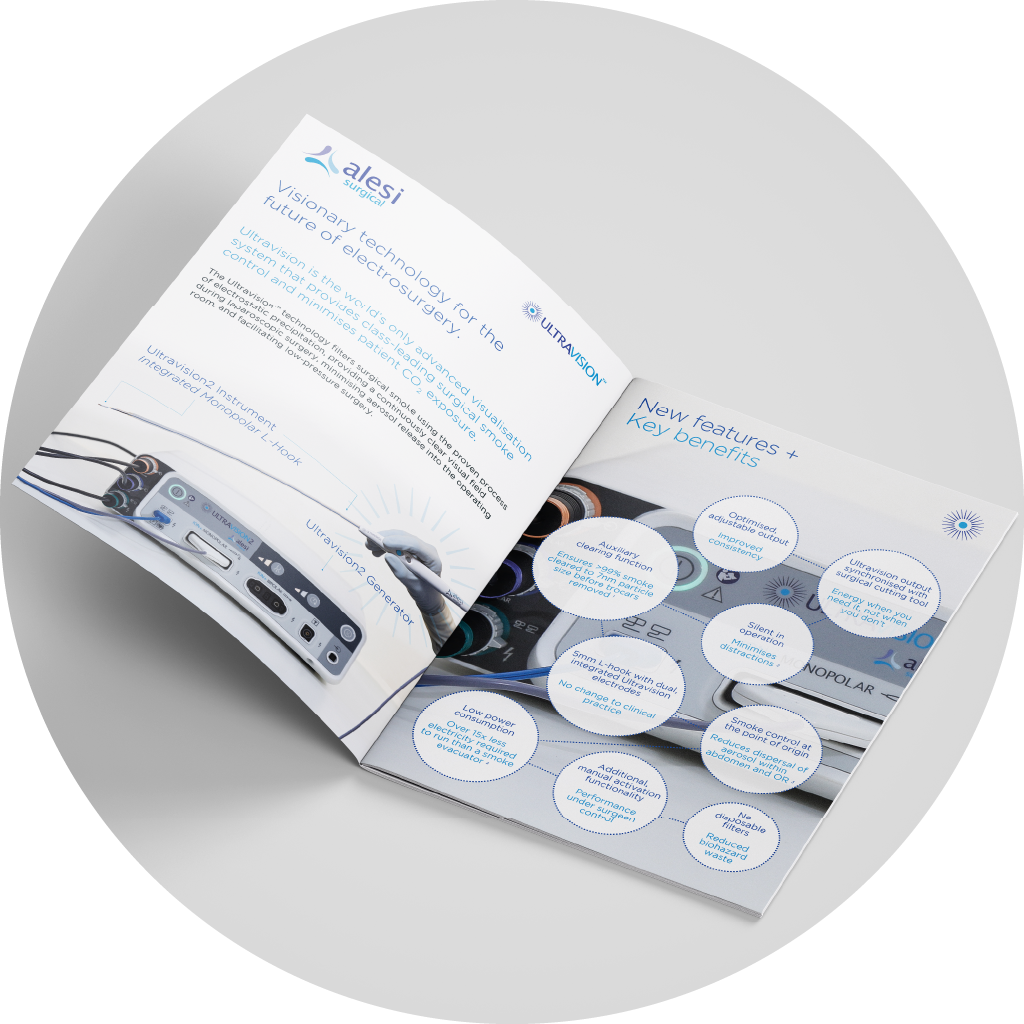Why Choose Ultravision
For Laparoscopic Surgery?

Ultravision™ helps healthcare providers deliver best-in-class care.
Providing staff and patients with the only solution that delivers advanced visualization, prevents surgical smoke from entering the OR whilst minimizing patient carbon dioxide exposure during laparoscopic surgery.
Benefits to Ultravision Stakeholders
For the surgeon
- Advances visualization
- Reduces camera cleaning
- Reduces interruptions in surgery
- Stable pneumoperitoneum
- Facilitates low pressure, low flow surgery
- Silent in operation
For the patient
- Minimizes exposure to cold, dry CO2
- Delivers the proven benefits of low pressure, low flow surgery
- Reduces time under anaesthetic
For the nurse
- Prevents release of surgical smoke into the OR
- Minimizes bioaerosol in CO2 leaks
- Performance verified on subviral-sized particles with >99% efficiency
For the administrator
- Reduces risk for patient and OR staff
- Improves staff wellbeing
- Optimizes efficiency in laparoscopic surgery
- Cost-effective alternative to advanced, high-flow insufflators
- Lowers carbon footprint through CO2 reduction
Ultravision Performance Comparison...
| Benefit | Ultravision™ | Advanced Insufflator |
Smoke evacuation system | Passive filter |
|---|---|---|---|---|
| Reduces interruptions to surgery caused by visual impairment | ||||
| Performance to sub-viral sized particles | ||||
| Stable pneumoperitoneum | ||||
| Reduces CO2 use | ||||
| Reduces operating time | ||||
| Best-in-class control of bioaerosols | ||||
| Reduced need to clean lens | ||||
| Silent in operation | ||||
| Cost of equipment | ££ | £££ | ££ | £ |
Ultravision sources: Ansell et al (2014); Levine et al (2020); Buggisch et al (2020); Alesi internal report DREP-002.
What the surgeons say
Accessories

Ionwand Pack
Feature
• Percutaneous 2.5mm catheter and trocar.
• Ionwand cable.
Suitability
• Maximum flexibility.
• Provides surgeon with ability to place Ionwand electrode where he/she prefers for optimal performance and ergonomics..

5mm Integrated Trocar
Feature
• Dual function 5mm trocar.
• Dilating trocar.
• Fixation ribs on trocar sleeve.
• Ionwand cable.
Suitability
• Removes need for separate percutaneous incision.
• Replaces a standard 5mm trocar.
• Ideal for use where 5mm trocar is used an energy or grasper trocar.

Integrated Monopolar L-hook
Feature
• 5mm L-hook with integrated Ionwand electrodes.
• Automatic smoke-clearing activation.
• Cut/coag, plus Ultravision manual activation button.
Suitability
• All procedures where a monopolar hook is the preferred energy source.

Want to see more? Ultravision in use
Watch a range of videos to see Ultravision in action. Our footage features a range of live cases across various specialties.

Want to read more? Download our brochures
Our product brochures are available to download in ready to print format for both open and laparascopic products.
Questions and Answers
• Ultravision2 delivers a maximum of 0.2W to the patient. This is 200x less power than a monopolar instrument set at 40W.
• The low output also means Ultravision2 uses at least 15x less power than a smoke evacuation system.
• No – there is not enough energy to generate heat in the Ionwand and therefore, no risk of thermal injury.
• The Ionwand is manufactured using softened, medical grade stainless steel and verified its safety on a range of tissues during development.
• Alesi has never recorded any incidence of perforation to bowel or other tissues (in fact, no adverse incidents in over 30,000 cases).
• Passive filtration relies on the (limited) pneumoperitoneum pressure to force CO2 through a filter that has small pores to trap the smoke.
• Because it is a dilution-based process, it is inefficient and slow.
• It increases patient CO2 exposure and can also result in unstable pneumo.
• Often passive filters become wet, the pores get blocked, and the filter stops working.
• This can happen in as little as 15 minutes and often several filters are required for one procedure.
• A smoke evacuator relies on a vacuum pump to pull CO2 through a filter.
• The smoke evacuator is noisy and distracting; the tubing is cumbersome and inconvenient.
• It dramatically increases patient CO2 exposure and results in unstable pneumo.
• If it is too aggressive, tissue can be sucked up the trocar and potentially damaged.
• Advanced insufflators are very expensive – both capital and consumables.
• They have multiple modes – expensive options add value, cheaper ones do not.
• Some advanced insufflators create a constant leak of CO2 and smoke into the OR.
• All advanced insufflators dramatically increase patient CO2 exposure.
• Ultravision has been independently verified to provide best-in-class visualization, smoke management, stable pneumo and CO2 consumption.
